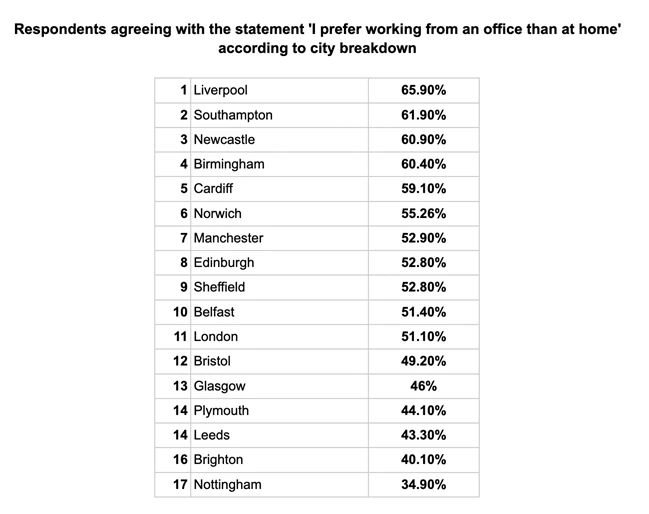- 2 Minute Read
- 28th August 2024
How Age Influences Office Space Preferences
Workplace preferences have shifted significantly, with generational divides playing a key role in shaping how different age groups approach office environments. Understanding these trends is crucial for companies to manage expectations of their employees as hybrid work becomes the norm.

Source: Censuswide
Younger Workers Are Driving the Demand for Flexibility
Younger employees overwhelmingly prefer flexibility in their working arrangements, with 70% favouring perks like flexible hours and early finishes to encourage office attendance. Nearly half would quit if forced to work in the office full-time, emphasising their preference for hybrid models and co-working spaces.
For them, the ideal workspace is often not a traditional office but a co-working space or a setup that allows them to work from home part of the time.
Middle-Aged Workers Seek a Balance Between Flexibility and Office Stability
Workers in the middle of their careers (typically aged 35 to 54) have experienced the benefits of both remote work and traditional office environments, and they are often looking for a balance between the two.
While they appreciate the flexibility that working from home offers, many also recognize the advantages of office-based work, particularly in maintaining productivity and separating work from home life. For instance, 42.3% of those who prefer working in an office cite the ability to separate their work and home lives as a key reason. This age group often values a dedicated office space, but one that provides options for hybrid work, allowing them to choose when and where to be most productive.
Older Workers Lean Toward Traditional Office Settings
For workers aged 55 and above, there is a stronger preference for traditional office environments. In the survey, only 33.5% of respondents in this age group agreed with the idea of needing perks to encourage them to return to the office, reflecting their inclination towards conventional work setups.
This generation values the structure and formality of a designated office space, often feeling more productive in environments where in-person interaction and collaboration are facilitated. Older workers may also find it easier to maintain boundaries between their personal and professional lives when they work in a traditional office.
Geographical Trends in Office Preferences
Interestingly, office preferences also seem to vary by location, often aligning with age demographics in different regions. For instance, cities like Liverpool, Southampton, and Newcastle, where office work is more favoured, tend to align with older populations that prefer structured office environments. Conversely, cities such as Nottingham, Brighton, and Leeds, where office work is less popular, showcases a younger, more flexible workforce.

Source: Censuswide
Summary
Generational differences play a significant role in shaping office space preferences, as younger workers push for more flexibility and hybrid work models, while older employees often gravitate toward traditional office setups. These evolving preferences not only reflect the changing attitudes toward work but also present an opportunity for companies to adapt their office environments to cater to diverse needs. By understanding and addressing these generational divides, businesses can create more productive and satisfying workspaces that align with the expectations of their workforce, ensuring a positive work culture as hybrid work continues to rise.
